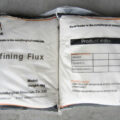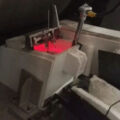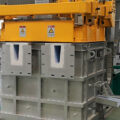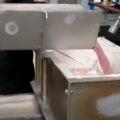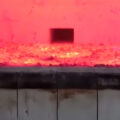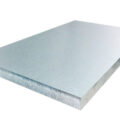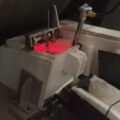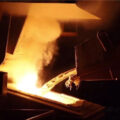Molten aluminum on cleanliness, that is, reducing the inclusion of the aluminum melt, is a very important factor in the production of high-quality products. The inclusions in the aluminum alloy make the alloy structure discontinuous, reduce the compactness of the product, cause corrosion and cracks, and reduce the mechanical properties of the final product.
Molten Aluminum on Cleanliness
Depending on the use of the final product, the molten aluminum on cleanliness level is different. The thinner the final product is required (cans, heat sinks, etc.), or the higher the surface quality requirements of high-precision strip foil (PS plate base, mirror decorative board, etc.), the higher the requirements for the cleanliness of the melt. During the remelting process, depending on the furnace charge, the clinker such as scrap, trimming, and sheet material is seriously oxidized and contains many kinds of non-metallic inclusions. The most common ones are alumina powder, oxide film, borides, Non-metal oxides such as magnesium oxide and magnesium chloride. Inclusions exceeding the specified content can cause various problems, such as breaking the continuity of the aluminum alloy, forming pores, or breaking the strip. When aluminum strips are used for PS plate base purposes, they are deformed by rolling, and inclusions will form common blisters on the surface of the final product. In addition, some very hard solid inclusions (such as refractory particles) can damage the surface of the rolling mill roll, leaving repeated marks on the strip and becoming the source of cracks.
The hydrogen in the aluminum melt mainly comes from the high chemical reaction between aluminum and the water in the furnace gas, and part of it comes from the hydrogen in the furnace gas or the air. Because of the high adsorption solubility of hydrogen in the aluminum melt, it is the main way for the aluminum liquid to absorb hydrogen. In addition, when aluminum ingots are stored in the open air, they are easy to contact with water vapor in the air to absorb moisture, which is also an important reason for the increase in air content of aluminum melt. When slab casting, pay attention to the water content of the environment and the casting temperature. The higher the solution temperature, the greater the solubility of hydrogen in molten aluminum, and it is inevitable that the ingot contains hydrogen.

The influence of hydrogen in the aluminum melt can form defects such as looseness, pores, and small white spots during the solidification of the ingot. When the temperature of the ingot rises significantly, from hot rolling to annealing, the above-mentioned pores will form blisters on the surface of the ingot, and these pores will crack at the edges of the strip during the rolling process. As discussed earlier, in the manufacturing process of ingots, controlling the cleanliness of the molten metal is a very important part of the manufacturing process. This is why it is necessary to use the alkali used to process the molten metal in the different process stages of the aluminum melt processing. The processing sequence of metals and inclusions, on-line degassing system and filtration system is the basic condition for obtaining clean molten metal.



